
In this article, Mick Ward looks at how bouldering has progressed from being something that very few climbers took seriously to now being many climbers sole raison d'être. Mick also looks at how, in the past, French and British climbers applied bouldering skill differently on larger crags and how this affected the ethics and developement of these countries at the time.
Today, when we visit many climbing areas and view a plethora of pad-wielding boulderers, it seems patently obvious that bouldering is an integral climbing discipline. Even 10 years ago it seemed odd for people to be dwarfed by bouldering mats on their backs – especially if they were hiking into the mountains. Today it doesn't seem at all odd. As with clip-sticks, bouldering mats are here to stay. Bouldering as a popular pursuit is here to stay. Yet for more than 100 years, bouldering was a minority preserve, not regarded as 'proper' (i.e. risk-taking) climbing. This convention was breached significantly in the 1990s when Ben and Jerry very publicly abandoned routes for bouldering. Nobody dared to suggest that they were no longer 'proper' climbers.
Because bouldering has become so mainstream, many people barely remember a time when it wasn't. But I can recall Paul Mitchell pointing out Crescent Arête, 5+, and Not To Be Taken Away, 6C, back in the early 1980s. To both of us they seemed HVS routes, albeit micro-routes. There were no mats; there was no spotting. You didn't really want to fall off.
A few years before Crescent Arête and Not To Be Taken Away were done, Drummond had produced Banana Finger. With his inimitable style, he gave it an infamously long description ('fidgeting' the finger change was particularly memorable). And he awarded it the then coveted 'XS' grade. Now the latter was ridiculous, even on the day it was written. But we just thought, "Well, that's Drummond being Drummond." (i.e. trying once again to shock people and thereby get some attention.) The XS grade was politely ignored. But what was Banana Finger? Was it a micro-route or merely a boulder problem? Nobody was sure; equally nobody was bothered by fine distinctions. We simply enjoyed the fun of fidgeting.
Millstone's Technical Master, 6B, was widely regarded as a boulder problem. I don't think anybody ever tried to seriously propose micro-route status. Because it was so obvious, right in the centre of the quarry, it was kind of hard to ignore. If you succeeded, there were scant kudos. Bouldering wasn't regarded as a serious activity. Millstone was for routes; routes were what mattered.
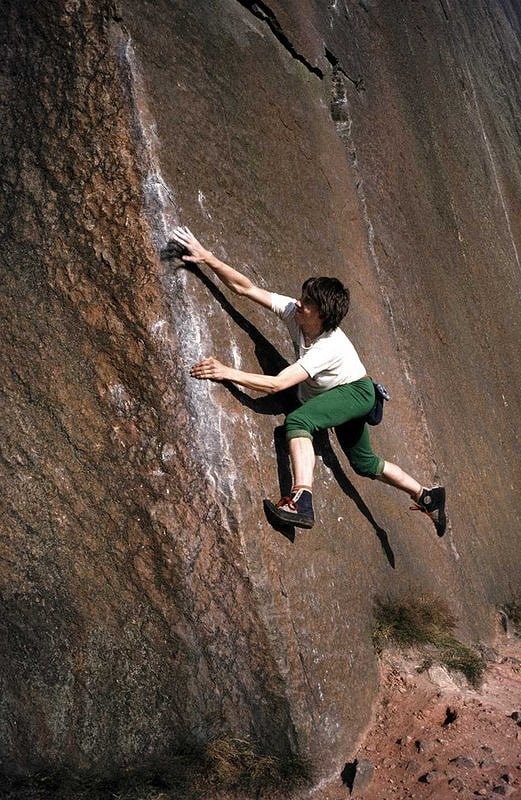
Of course we knew about John Gill and his dedicated pursuit of the boulderer's art. Gill, as with Drummond, was viewed as an anomaly. But hey, wasn't climbing supposed to be about rebellion, about doing your own thing? Unlike Drummond, Gill wasn't perceived to have a big ego – not that any of us had actually met him. He seemed a reclusive legend. (In later years other reclusive bouldering legends, such as Holloway and Gaskins, would emerge.) He certainly got respect; one-finger pull-ups can't have happened easily. And he'd done those hard solos on The Thimble, ground-up, above unthinkable landings. So he had guts. From across the pond, we struggled to decipher Amentian koans such as the fabled, 'Sometimes I could grasp the holds, but not the problem...' We certainly couldn't understand Gill. But he seemed harmless, a good guy taking climbing in an unlikely direction. Given that he could climb technically harder than anyone else and he had guts, it seemed a shame that he wasn't doing more routes. But ultimately it was his choice – a choice one respected.
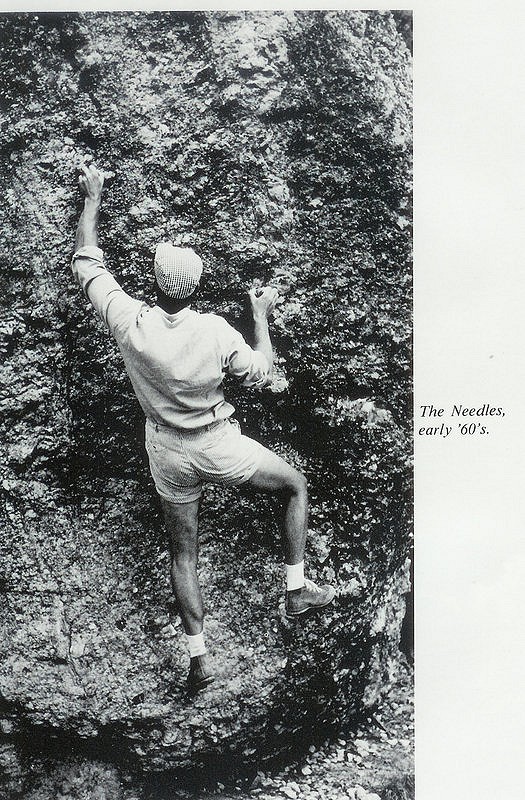
Was there a cultural dimension to Gill's bouldering? Places such as Flagstaff were well-developed. Back in rain-drenched Yorkshire, a few keen characters made pilgrimages to venues such as Shipley Glen and The Bridestones. But Shipley Glen and The Kebs hadn't the kudos of Flagstaff; in fact they didn't have any kudos at all. And therein lay part of their discreet charm.
In his seminal 1960s essay, 'Games Climbers Play', Lito Tejada-Flores suggested that it might be useful to regard climbing as a series of 'games':
'Climbing is not a homogeneous sport but rather a collection of differing (though) related activities, each with its own adepts, distinctive terrain, problems and satisfactions, and perhaps most important, its own rules. Therefore I propose to consider climbing in general as a hierarchy of climbing games, each defined by a set of rules and an appropriate field of play.'
Tejada-Flores identified seven climbing 'games'; the first was bouldering.
'...one should note that the basic bouldering rules eliminate not only protection but also companions. The boulderer is essentially a solo climber. In fact, when we see solo climbing at any level of difficulty, it represents the application of bouldering rules to some other climbing-game. Aside from that, this game is found in every country where climbing exists, although the number of climbers who specialize in it is relatively small.'
Back when Tejada-Flores was writing 'Games Climbers Play', there was only one international venue for bouldering. This was Fontainebleau, which already had decades of development. You'd leap in the van, hurtle from Yorkshire to Fontainebleau, scrabble about for a few hours, stagger back in the van and head for the Alps. Why? Because the Alps was where it was at, that's why. Apart from breaking the journey to Chamonix, Font was of obvious significance to Paris climbers. If they didn't have time to get to the Saussois, it was all there was (rather like Londoners and Southern Sandstone, though obviously far better).
Font - or 'Bleau', as the locals then termed it - had spawned its unfair share of French technical genius. But what did the French do when they hit the crags? 'Tire clous' was what they did – they flaming well pulled on aid! Which was why, back in the late 1970s, when places such as the Verdon were being opened up, everybody knew that the Brits could run rings around them when it came to 'proper' climbing.
Looking back, with inevitable hindsight, it seems bitterly ironic that neither the Brits nor the French seemed able to discern clearly what we might now describe as paradigm clash. Because we had lots of crags from 30 feet to 300 feet, free climbing could advance. You might spend a lot of time on a Cloggy testpiece (e.g. Drummond's reputed three-day second ascent of The Boldest) but that's because you could spend a lot of time on it. You might get rained off but you were unlikely to be avalanched or storm-bound. Down Chamonix way, avalanches and storms were all too common occurrences. Climbing fast meant climbing more safely. And climbing fast meant pulling on aid, rather than faffing around trying to free stuff. So 'tire clous' made eminent sense. While eliminating aid on a 30 foot route or even a 300 foot route was viewed as significant, eliminating aid on a 3,000 foot route seemed downright trivial. Honestly, who cared if you pulled on a few slings? What mattered was getting up the damn thing as quickly (and thereby safely) as possible. If Brits could free alleged A3 on the South Face of the Fou then, while it might be fun to cock a friendly snook at the clanking Yanks, the practical benefit was that the route could be done faster. In the Alps, speed was your best friend.
The problem for the French was that they had a famous, highly-developed bouldering venue, they had interim-sized crags - and they had the Alps. They applied Alpine methodology ('tire clous'), not bouldering methodology, to their interim-sized crags. The consequence? Generations of technical genius was wasted.
Of course there were pioneers, both in the UK, France and elsewhere. There are always pioneers, often overlooked, such as Flipper Fietz. Certainly some Font-trained climbers did hard moves in the Alps. But when the story did the rounds that American climber Michael Tobias had come all the way from America to Chamonix for the first ascent of an eliminate on the boulder in Snell's field, it was thought perverse beyond belief. And when we heard that Yorkshire bouldering maestro Al Manson was planning to spend two weeks at Font, not the Alps, he was similarly viewed as having gone stark raving bonkers. Al's bouldering circuits at Almscliffe and Caley were regarded as interesting but ultimately of little consequence. There was absolutely no doubt as to his route ability; as with Gill, he could climb bigger stuff. But it seemed a little sad that, apparently, most of the time, neither Gill nor Manson wanted to climb bigger stuff. And, as for taking your summer holidays at Font, perhaps if enough Tetley's bitter was poured down Al's neck, he'd come to his senses!
Such are the indignities that pioneers suffer. I can remember Al noting in a television interview that bouldering was, "like doing the best bits of hard routes". At the time, I thought, 'Bloody hell, he's absolutely right!' And then I (along with everybody else?) promptly reverted to mental slumber.
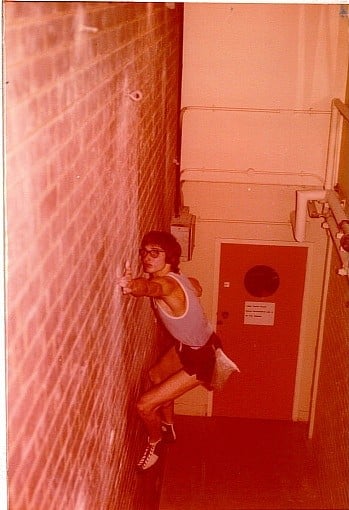
Back in the early 1970s, courtesy of people like John Syrett and Pete Livesey, it was realised that training for climbing could seriously improve your performance.At first, a lot of the training was Livesey-type stamina traversing, useful for the sustained limestone routes which were springing up. Here the aim was to be able to do lots of 5c/6a moves, with poor rests. However, in an article entitled 'The Shape of Things to Come', Livesey noted that 6b and 6c moves were being done on the Leeds wall. At a time when 6a was regarded as pretty much the living end on crags, this was radical stuff. Livesey went on to suggest that, when moves of this difficulty were done outside, standards would leap by several grades. He was absolutely right.
In a later 1970s article, Livesey distinguished three types of hard route: the hard but well protected (e.g. Nectar), the sustained (e.g. London Wall), and the downright dangerous (e.g. The Linden). For the first type, difficulty was encapsulated in 'the move'. Essentially it was bouldering with a rope on – the approach Jim Collins adopted on the Psycho Roof and Genesis.
In the early 1980s, the French suddenly awoke from their collective reverie. Early F7as had been done ground-up, with skyhook protection, on the scary walls of Mont Saint Victoire. Rightly they realised that, however commendable, this was a decidedly iffy approach towards climbing physically harder stuff on crags. How could you concentrate on 'the move' when, if a foot popped off a tenuous smear, you might die? The French didn't have a tradition of nut protection, featureless limestone walls often lack decent nut protection anyway and, understandably, skyhooks are viewed as specialist not mainstream protection. The solution? Bolts, working moves, redpointing. All this was encapsulated in the once scandalous term, 'French style'. With some relatively easily acquired fitness, you could take your Font technical prowess to Buoux. F7a quickly became F8a, then F8c.
In the early 1980s, one climber in particular was obsessively focused on becoming the best ever. Jerry Moffatt ceaselessly searched for improvement tactics which would give him an edge over the inevitable competition. At Stoney he trained on Tom's Roof for the Psycho Roof and on Minus Ten Wall for Genesis. In essence Jerry was using bouldering to replicate the anticipated difficulties of Psycho and Genesis. He had the visionary genius to make conceptual links between scruffy little problems at Stoney and world-famous routes. The result? He quickly repeated Psycho and Genesis and flashed Supercrack and Equinox. Badly pumped on Supercrack, he managed to recover on a flat hold just like the one he'd spent ages hanging on, back in a dank cave at Stoney. Replicas worked. Bouldering prowess could be applied to 'boulders in the sky'. Significantly Jerry wrote, 'After that, I spent the rest of the trip mainly bouldering at Horsetooth and Flagstaff, often doing second ascents and repeats of John Gill problems.' On that trip, Jerry also came under the influence of American climbing legend, John Bachar, who was also analytically examining every likely way to improve. Bouldering was a key part in Bachar's training repertoire. Jerry sat at the feet of the climbing training guru; he heeded every word uttered.
In 1984, when Jerry did the second ascent and first one-day ascent of Ben Moon's superbly entitled Statement of Youth, he casually mentioned to me that he'd only done a few routes that year (mostly the day before!) "So what have you been doing?" I asked, bewildered. "Bouldering" he casually replied. Bouldering? It seemed bizarre. Why on earth would the best climber in the world waste his time bouldering? To normal climbers like me, the penny just hadn't dropped. It simply never occurred to me to make a connection between venues such as Cressbrook Dale and routes such as Statement. Looking back, I can't believe how blind I was.
In 1985 Jerry went to Yosemite, which boasted the most famous boulder problem in the world. Midnight Lightning was first climbed in 1978 by Ron Kauk. Shortly afterwards, John Bachar succeeded. In the intervening years, there was only one other known repeat – by the talented Californian, Skip Guerin. Jerry made the fourth ascent. Midnight Lightning was – and is – utterly iconic, known to hundreds of thousands of climbers, of many nationalities, whether or not they've ever been to Yosemite. It occupied centre-stage in a climbing mecca. Midnight Lightning was an autonomous entity. It wasn't viewed as practice for El Cap. Getting up Millstone's Technical Master held few kudos; getting up Midnight Lightning held considerable kudos. It was perhaps the first boulder problem to legitimise the genre.
However it would take another decade for bouldering to gain mass acceptance. In the late 1980s, Jason Meyers virtually gave up doing routes in favour of bouldering. To the likes of me, Jason was simply diminishing his stress levels! I didn't appreciate that he was making some astounding contributions to British bouldering. A few years later, when Jerry did the first ascents of The Barrel Traverse and Jerry's Roof on the same day, Johnny Dawes, who'd shown Jerry these unclimbed problems, didn't seem too upset. First ascents of boulder problems weren't significant, were they? Well to Jerry they were.
In the 1980s, sport climbing was for the elite; unsurprisingly, in the 1990s, the masses (i.e. you and me!) wanted in on the act. Thus was born 'convenience climbing', psychologically undemanding clip-ups which are about as safe as climbing ever gets. An upsurge of climbing walls begat even more 'convenience climbing'. But easy bouldering represented 'convenience climbing' par excellence. However, for easy bouldering to become accepted in the way that easy sport climbing was being accepted, one condition needed to be met; it had to get safer. Bouldering mats arrived. As with previous innovations, such as chalk and cams, once the genie was out of the bottle, you just couldn't get him back in again. As with chalk and cams, bouldering mats were claimed by the masses as well as the elite. And why not? Old skool bouldering had involved dodgy moves a long way off the deck. (If you could still see your beer mat, things were still OK, err... weren't they?) Old skool bouldering had involved dodgy low-level roof climbing, where if you slipped (or worse, a hold broke) there wasn't space or time to avoid landing flat on your back. Spotting, together with a bouldering mat (which quickly became two or three or as many as you wanted) put paid to these dangers which suddenly nobody seemed to want any more.
The upshot was that bouldering suddenly became wildly popular. Leading outdoor shops went from selling one or two bouldering mats a week to aficionados, to selling 50 times this amount, mostly to the likes of you and me. Most of the time we weren't intent on repeating the classic boulder problems of previous generations; we simply wanted low-stress fun. However bouldering mats and spotting enabled Harry and Harriet Hardcore to push the boundaries of physicality, together with doing ground-up ascents of hard micro-routes. And, while they were busy with all that, they were also developing power, the philosopher's stone of hard climbing. As with Ben and Jerry, they were using bouldering both as a training device and as an autonomous entity. The widespread use of Font and V grades further legitimised bouldering as an autonomous entity. The next step was the naming of boulder problems, even the most remote or trivial. Then came bouldering guidebooks. Finally there were indoor walls, dedicated to this formerly arcane art. After over 100 years of obscurity, bouldering had emerged into the limelight, had received mass acceptance, had become truly mainstream.
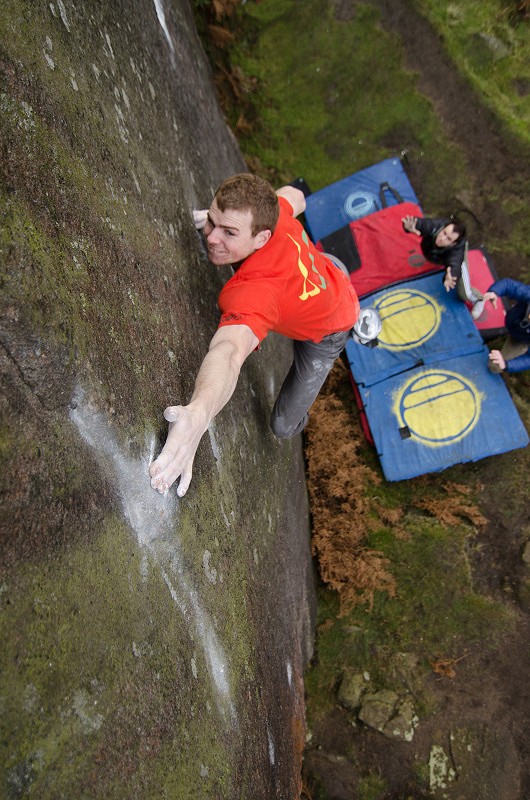
This article is illustrated with photos from the UKC Photo Galleries. A huge thank you to all the contributing photographers.
You can check out the stunning photography in the UKC Bouldering Galley Below:
Photo Gallery

Headtorch bouldering on grit. Me doing Rock Around The Block (6a) at Spofforth, Yorkshire
© Jamie Moss
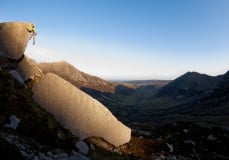
The Edge of Darkness
© Dan Arkle
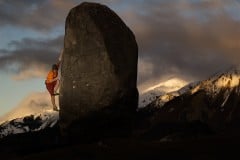
megalithic
© jim.macp
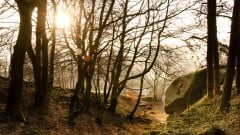
Angel's Share
© Nick Brown

Goodbye 2012
© Mark Collins

Midnight Daydream
© Jamie Maddison

ocean
© jim.macp
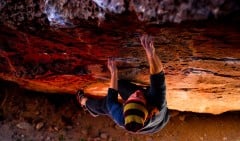
Katherine Schirrmacher on Better Eat Your Wheaties, V8. Hueco Tanks.
© Alex Messenger
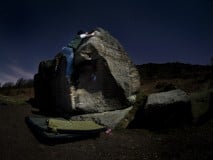
Trackside after midnight.
© Tom Napier

A Highland Arete
© Sean Bell
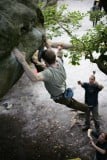
L'Helicoptere
© R & J Bradley

A very warm evening send of Physical Graffiti at Dumbarton Rock.
© Jonathan Bean

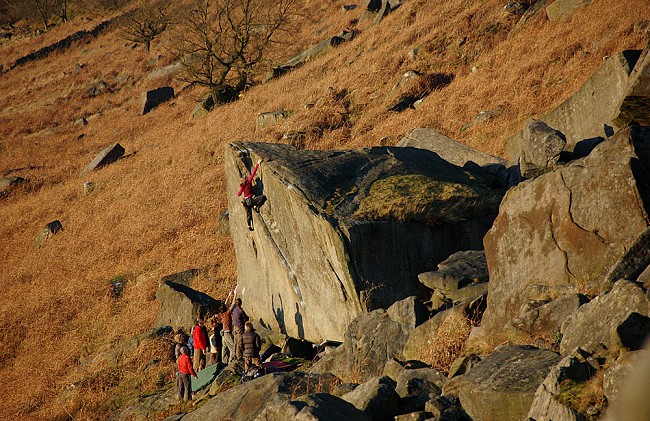

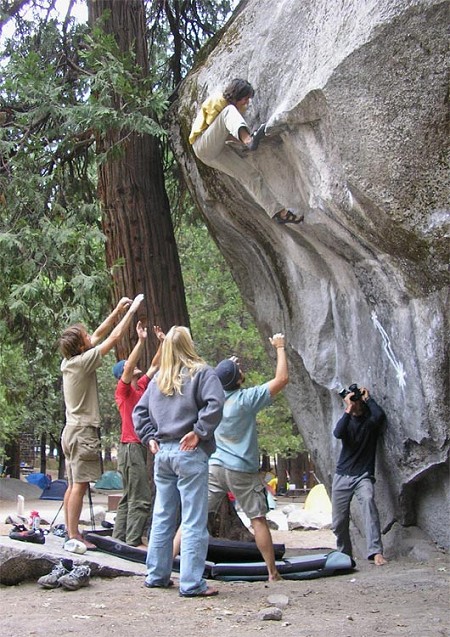
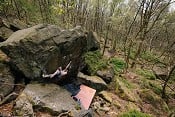
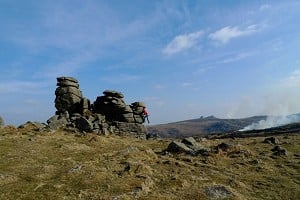
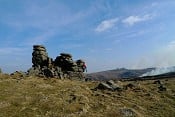
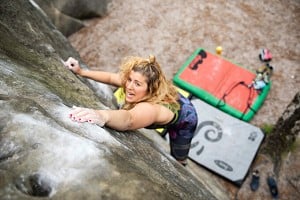









Comments